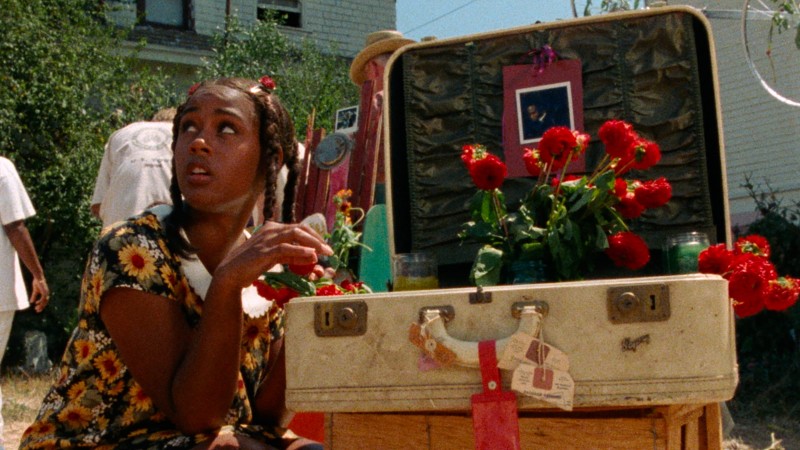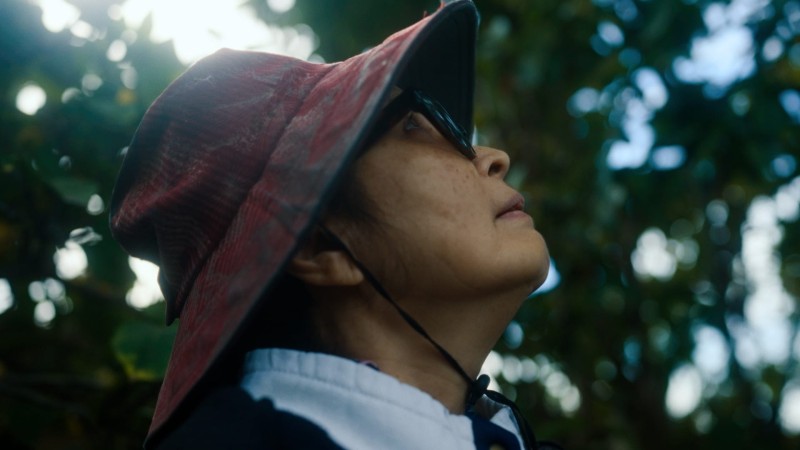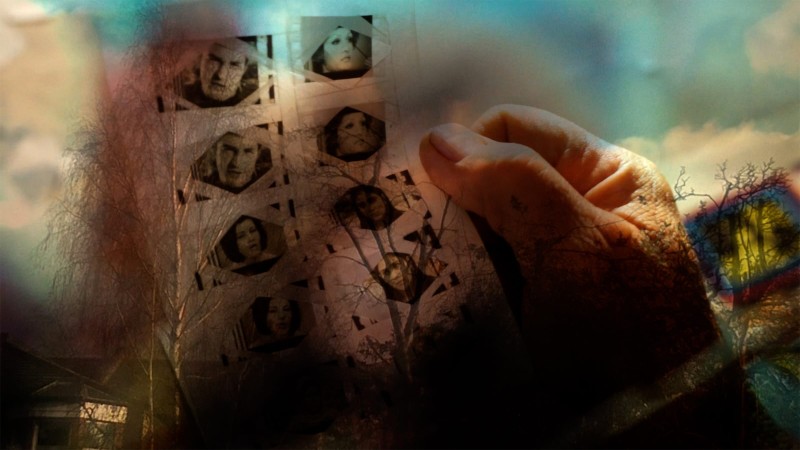Joanna Hogg Revisits Her Past Selves

It may have taken nearly two decades after graduating from England’s National Film and Television School for Joanna Hogg to emerge as a feature filmmaker, but it was worth the wait. After making her thesis film, Caprice (starring a then-unknown Tilda Swinton), in 1986, the writer-director spent many years honing her craft by directing music videos and television. It was not until 2007’s Unrelated, an intimate portrait of a fortysomething woman who finds herself distracted while on holiday with her friend’s family, that Hogg’s spirit as a filmmaker was fully reawakened.
Hogg followed up that debut with her remarkably assured second and third features, Archipelago (2010) and Exhibition (2013), which expanded on her thematic obsessions: family dynamics, artistic vocation, strained romantic relationships, emotional attachments to place. She brings these subjects to life with an immediacy fostered by the naturalistic performances of her actors, who work not with a traditional script but with a document of photographs and snatches of dialogue that offers a psychological roadmap of the story.
Although all of Hogg’s films have drawn from her own biography, her latest, The Souvenir, is by far her most personal excavation yet, reopening the wounds of her past as a young film student trying to balance her creative ambition and the emotional demands of an all-consuming romance. I saw the film back in February at the Berlinale and haven’t stopped thinking about it since. So when Hogg stopped by New York last week, I couldn’t wait to ask her about how the young woman she was has informed the artist she’s become. During her visit to Criterion, we talked about where her love of movies began, the traveling film collective she cofounded in 2011 with filmmaker Adam Roberts, and how making The Souvenir has brought her back to her cinematic roots.
When you were first starting to fall in love with movies, what were some of your early cinema-going experiences like?
One experience I remember that was slightly strange was seeing The Bubble, an American 3D sci-fi film made in 1966. This was at the local cinema, the Essoldo in Tunbridge Wells. I wasn’t even seven years old, and I don’t think my mother really knew what we were going to see, but I remember it was the first time I’d seen anything in 3D—and it gave me a headache! But obviously that headache translated into something else, because I have such a vivid memory of sitting in the cinema and being captivated by it. Something I actually discovered only recently is that in the early thirties the Essoldo was called the Ritz, and it was where David Bowie’s parents met, because his mother was a waitress in the restaurant in the theater.
Other early cinema-going experiences included seeing films like Invitation to the Dance and Singin’ in the Rain, and around age ten or eleven I had a crush on Gene Kelly, rather than on some pop idol. I absolutely adored him and loved the way he danced. I was just completely in love, and it was because of him that I started tap dancing lessons. When I first began developing ideas for my own work in film school, I was influenced by those early experiences watching dance on-screen, as well as something about the Technicolor in those movies that I loved.
How did your taste evolve from there?
In the period just before film school my taste was eclectic, and I was watching so many different kinds of films. Ulrike Ottinger’s Ticket of No Return inspired me, as well as a lot of films of the late seventies.
All That Jazz is the one I absolutely adored more than anything at that time. I don’t think I completely understood it then, but there was something about the combination of the musical form and the personal, autobiographical aspect of it. And beyond the musical sequences, it just has an incredible rhythm that goes backward and forward—you can feel it in your body when you’re watching it. I’m completely obsessed with Bob Fosse and I’ve been looking again at his work as a dancer. I can’t enthuse enough about it.
Were you an avid filmgoer at that time?
Completely. The film scene in London was amazing. You could see multiple films one after the other and spend the whole day in the cinema from morning until the next morning. I would see something like 1900 at an all-night screening at the Gate in Notting Hill. There were so many independent rep cinemas, like the Paris Pullman Cinema. And there was an art-house multiplex on Oxford Street called the Academy—it’s hard to believe now that there was a multiplex for Rohmer and Godard, but it was so beautiful. It had an Italian restaurant in it, and if you were really cheeky, you could get into the cinema through the restaurant.

Your films are so saturated in memory. They emerge from experiences in your own life, and you craft them to give a sense of what the act of remembering feels like.
Initially when I started thinking about making The Souvenir, I wondered if my memory was good enough to conjure up scenes for the film. But I’ve found that the more I’ve looked back at that time, the more I’ve remembered. Conjuring the apartment that I lived in during those years was enough to bring back all sorts of memories.
Did you find that listening to certain music from that time also had this effect for you?
Music is especially powerful in that way, and it was very important for me to use certain pieces of music in the film because I didn’t want to be a slave to that period of time. I didn’t want to fetishize the early eighties, but I did want to create an impression of something that rang true for me. There was Joe Jackson, Robert Wyatt, the Specials . . . so all the tracks that I used in part one [of The Souvenir] were pieces of music that meant something to me at the time. It was my own personal madeleine of that moment.
What’s so beautiful and devastating about The Souvenir is the way it captures how a person’s ambitions and passions can unconsciously slip away when falling in love with someone who takes up more space in the world. You depict that with such delicacy, especially in the moments that aren’t meant to be the most narratively dramatic.
Just hearing you say that, I’m reminded of that tension of wanting to be in one place but worrying so much about another. It’s excruciating.
I like to tread quite lightly over my past, and I don’t like to judge my characters. I like them to just be. It wasn’t an easy thing to revisit that period in my life, and I went through a lot of quite dark times as I developed it. It’s not that the story continues to upset me, but the most challenging thing was going back to the person I was, or who I thought I was—it was fifty-something Joanna meeting her former twenty-year-old self. I didn’t realize how difficult that was going to be. The revelation for me was that I’m still that person. I might appear to know more of what I’m doing now, but so much of that is still what I am. I find that my twenty-year-old self still has something to offer me now. The films she was interested in watching and inspired by then are returning for me through this story.




